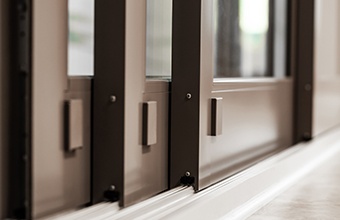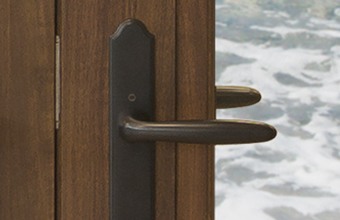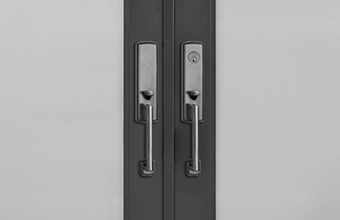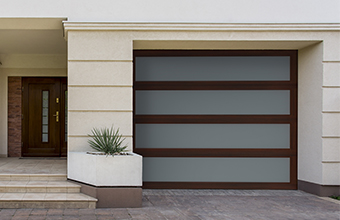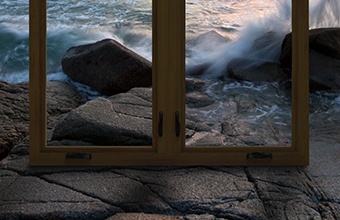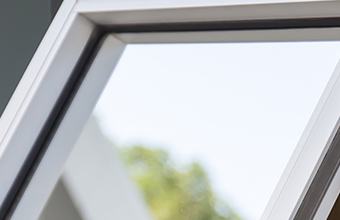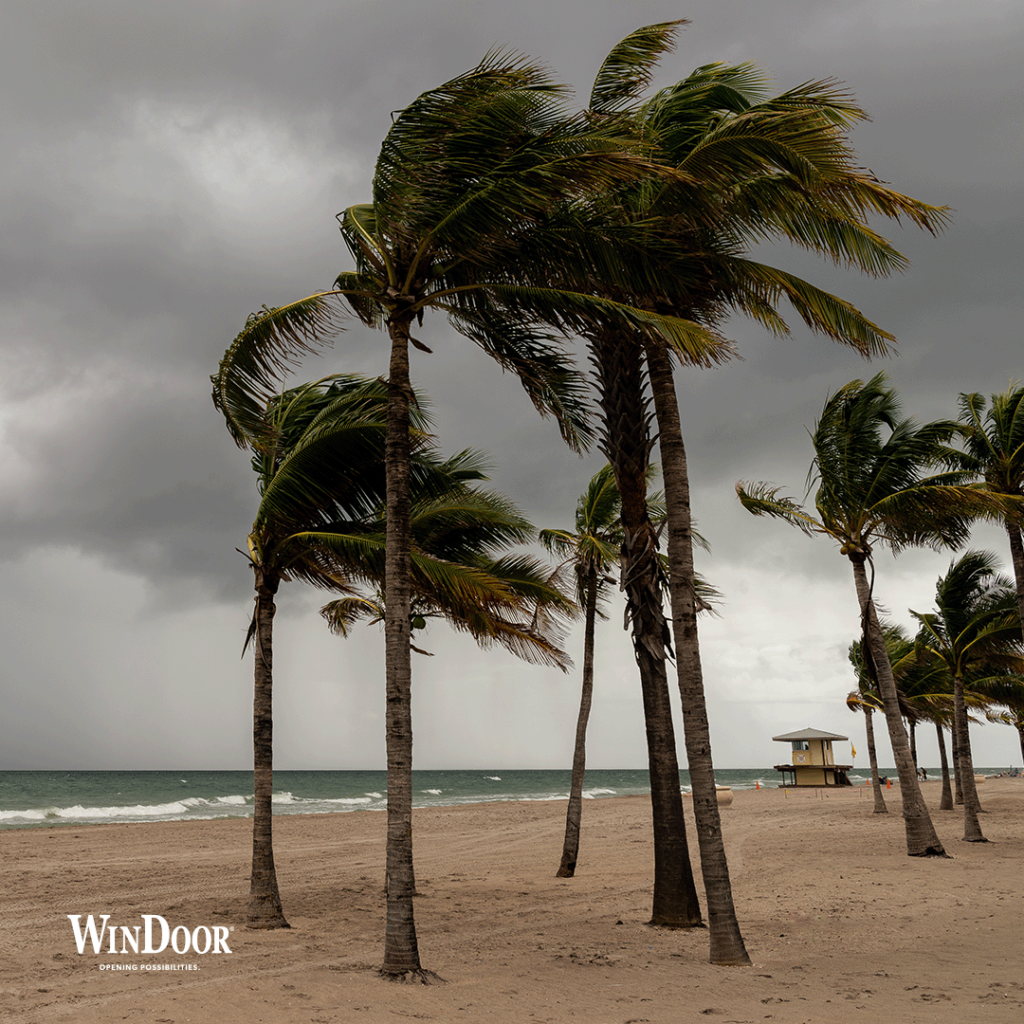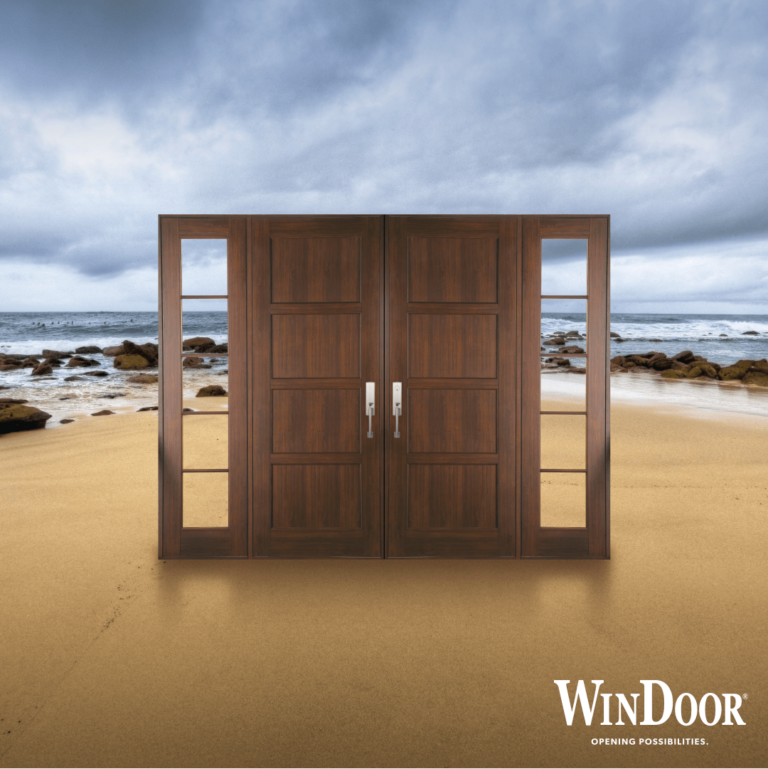The Atlantic hurricane season lasts from June 1 to November 30, and during that time, anything can happen. If a hurricane were to hit your home, would your home be ready?
If you live in a hurricane prone area, taking steps to safeguard your home can help protect your property, your family, and potentially everything you own. There are many things you can do to safeguard your home. Taking steps like installing impact-resistant doors and windows, constructing a seawall, and trimming back trees and landscaping can help ensure that your home will ride out the storm as effectively as possible.
Install Impact-Resistant Doors and Windows
Doors (including garage doors) and windows can be very vulnerable. High winds can easily blow through doors and windows, causing pressure to build up inside. When this happens, the results could be catastrophic. Pressure inside your home can easily cause the roof to blow off.
You can stop this problem by installing impact doors and windows. Impact windows are made from heavy-duty window frames around thick panes of laminated or laminated insulating glass. They’re designed to withstand heavy winds, precipitation, rapid changes in pressure, and fast-flying debris.
When you install impact doors and windows, you don’t have to compromise on the appearance of your home to ensure that it is safe. Impact products, including impact doors with windows, can withstand damage that would leave a traditional window cracked and broken.
Impact doors and windows are an attractive and functional alternative to hurricane shutters, which must be pulled down or installed in order to be activated. Impact products have the advantage of always being attached to the house, with no need to turn them on. Impact doors and windows can raise the value of your home and help protect your property at the same time.
Construct a Seawall
A seawall is a wall that protects man made structures from storm surge and erosion. If your home is on the water, a seawall could save your property from devastating floods. Seawalls sometimes need to be made with help from an engineer, so it’s important to find an experienced contractor with the right credentials or team to have a seawall made.
Just how high your seawall needs to be depends on where your home is located and its level of risk in the event of a hurricane. While installing a seawall might be expensive, a seawall may also lower your homeowner’s insurance rates, which could help pay for any associated costs.
Trim Trees and Landscaping
Tree branches and pieces from large shrubs can do damage to your home during high winds. Keeping trees trimmed and removing weak branches can reduce risk in the event of a severe storm. Have your trees evaluated occasionally to identify branches that should be removed. If your trees start to display signs of a problem, have an arborist determine whether your trees need to be cut down. Look for symptoms such as:
- Yellowing or browning foliage
- No new growth or reduced new growth
- Cankers and open wounds
- Mushrooms growing on the trunk
- Tree is shedding bark
- Tree loses its leaves unseasonably early
- Tree is leaning in one direction
Even if your trees are healthy, it’s still a smart idea to have your trees evaluated periodically. Prune back any branches that hang over your house, garage or other structures on your property. Get an expert to do the pruning for you, as trimming large tree branches on your own could be dangerous.
Install a Whole-Home Generator
A standard generator relies on a fuel source like gasoline, and most standard generators have limited capacity to keep the parts of your house running during a storm. A whole-home generator is a generator that runs on natural gas from your utility line, and can power your entire home in the event of a power outage. Whole-home generators are designed to turn on automatically in the event of a power outage, which means they’re simple to use and they offer a near seamless transition from standard power to generator power.
A whole-home generator can keep your house comfortable and habitable during a severe storm, even if your power is out for long after the storm is over. Installing a whole home generator could mean the difference between staying in a hotel for a while, and getting to stay home.
Remove or Secure Potential Flying Objects
Patio furniture and yard toys can become a real danger during a big storm. Just like anything else, patio furniture and yard toys can be picked up by high wind and flown across the lawn to do damage to your home. In addition, anything that hasn’t been secured in the event of a storm can easily be blown away and lost forever.
It’s important to secure anything that hasn’t been nailed down before a big storm shows up. Have a place in your garage or in your home where yard toys, furniture, and tools can be stored until the storm goes away.
Use a Monitoring System
In the event that you’re evacuated from your home, you may want to know what the status of your property is. You can find out the status of your property through a home monitoring system. Using a monitoring system can tell you if your house has been flooded, if it has power, if it’s been compromised, or if it’s completely safe.
There are many types of monitoring systems. If you’re on a budget, you can purchase a smart monitoring system that will allow you to monitor your home from your smartphone. If you can afford an ongoing cost and would prefer to have your home monitored by a third party, consider a home security system from a professional company that will monitor your home for you. These companies have a monthly subscription, but offer an additional level of protection because your home will be monitored by an off-site team.
Protect Your Home from the Next Big Storm
Big storms represent a real threat to your home, especially if you haven’t taken action to protect your property. Taking steps to upgrade your home’s features can ultimately mean the difference between a lot of damage, and very little damage. Be ready when the next hurricane hits. You’ll be glad you did.

